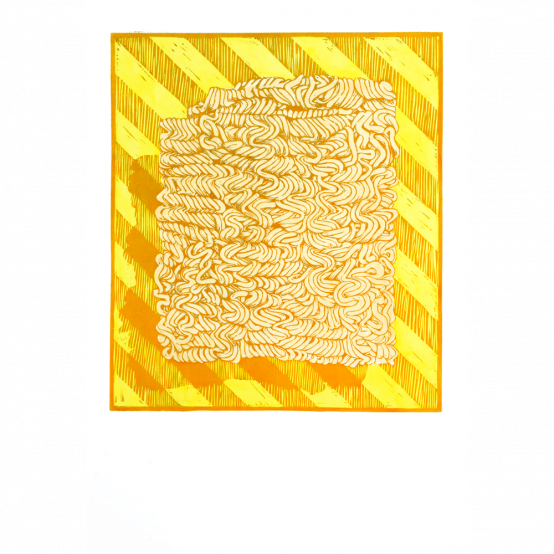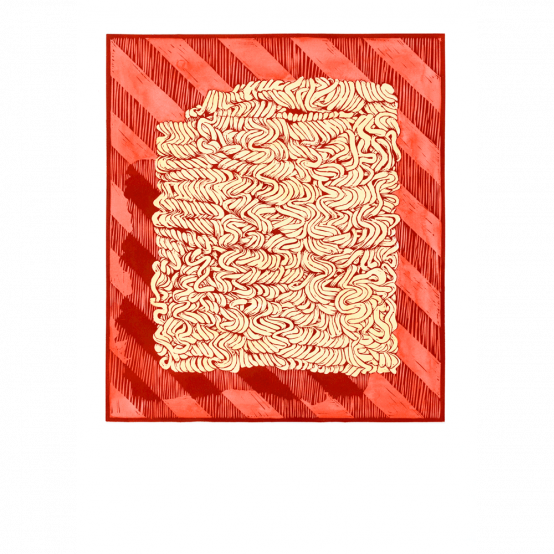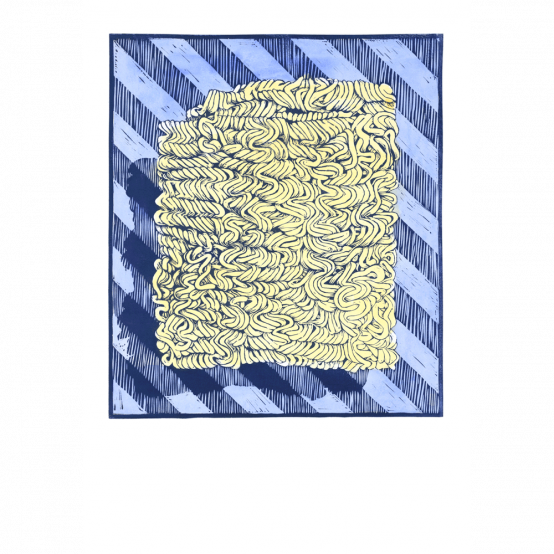instant noodles, yes please

The mass-produced, the empty and the nostalgic are often present in Thomas Hansson's images. In the new series of linocuts, he has depicted instant noodles of different flavors, "hot", "vegetables", "chicken" and "mushroom". How - and why - is something so simple and ordinary elevated to art?
- I see my use of everyday motifs more and more as a search for meaning in what is considered meaningless, says Thomas Hansson. Perhaps as a way of trying to understand the world we live in and come from. Nostalgia functions like a warm safe blanket; something recognizable. But perhaps nostalgia actually gives us depth and meaning to the emptiness. Fills it with meaning through the accumulation of layers and meanings that time has given an object. Which nostalgia picks up and consolidates.

In the suite 'Instant noodles, yes please!', we meet the block of squiggly noodles, ready to be immersed in hot water; a cheap, simple, warming and tasty meal. A mass produced and nutritionally questionable quick fix; something you use when you don't have the time or energy to cook.
- The process of making instant noodles came in the late 1950s. I see them in the light of that era's dream of an easier life, where you didn't have to spend unnecessary time cooking. A time of newfound leisure and wrinkle-free synthetic clothes. The instant noodles are a whisper from then, about the future that lay ahead. A future that at the time still felt bright.

Linocut is a printmaking technique where the artist carves into a soft linoleum plate. Any areas that are cut out will remain white when the plate is inked and used to print with. This means that the artist must think "negatively", the areas that are not worked on will be colored. When the linoleum plate is ready, it can be used to printed with repeated times and thus create editions. Thomas Hansson's noodle suite is printed with the same printing plate and colored with different inks and then to some extent watercolored afterwards. The editions are small, between 5 and 6 prints per color.




